Gamebox 2.0: Games of August 2024
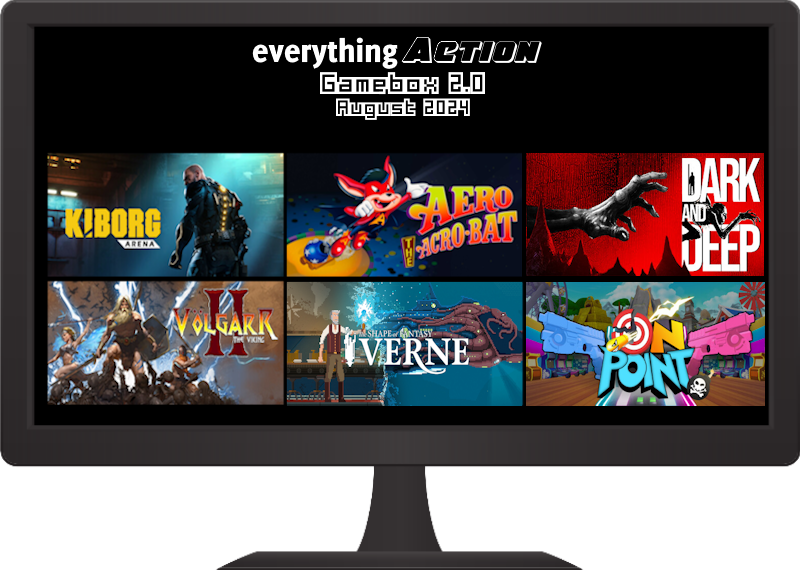
We had some recent website issues but are back and ready to let you know what we have to play in the world of video games for August. We entered VR for an homage to the classic Point Blank series, On Point, and played the sequel to the brutally hard action platformer Volgarr the Viking, a fantastical adventure 20,000 Leagues Under the Sea with Verne: The Shape of Fantasy, journeyed into the Dark and Deep and more. Below are all the games we checked out this past August.
Verne: The Shape of Fantasy (Zach): Coming from Assemble Entertainment and Gametopia, Verne: The Shape of Fantasy was released last year on PC and hit Nintendo Switch in August. You play as Jules Verne, a member of Captain Nemo’s crew aboard the Nautilus in this game’s universe. At war with “The Nation,” the Nautilus crew is searching for the legendary Flame of Hephaestus, a source of potentially unlimited power. During their quest, Verne possesses the IMAG, an ancient Atlantean device that allows him to use his imagination to change the reality around him. The game is a story-driven adventure that features full voice acting for all the characters, which is almost uniformly excellent. The pixel art is also some of the most beautiful and stunning I can remember seeing in recent memory, with tons of rich details and incredibly creative designs.
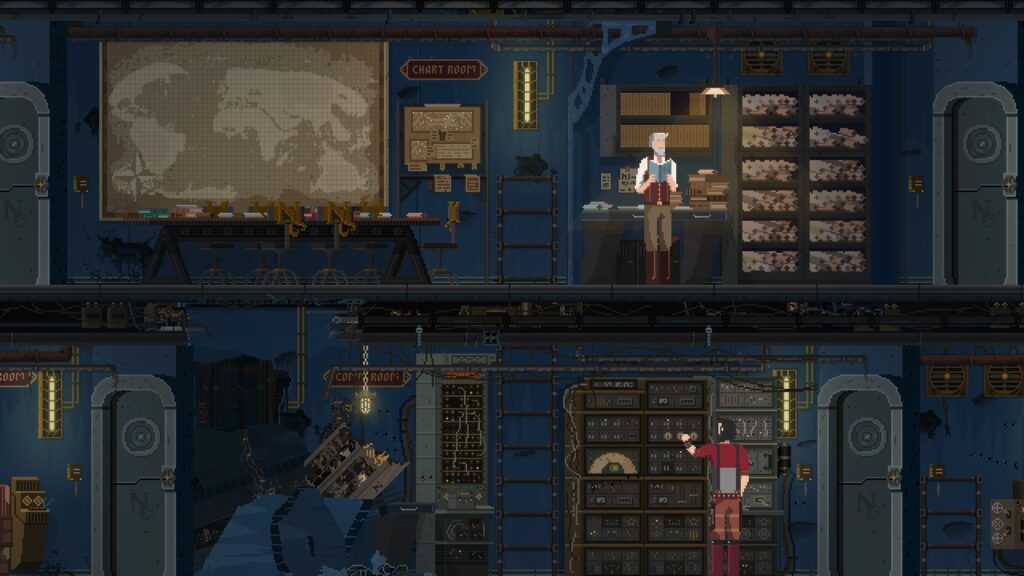
You control Verne through different chapters, with some objectives you must complete by solving environmental puzzles or collecting particular objects. It’s a classic point-and-click adventure-style gameplay, but more action-based areas, like a stealth section, exist to complete. The IMAG is a great, creative addition to gameplay, allowing you to choose a few options for manipulating reality and solving the current puzzle. There are also plenty of options for dialogue when talking to other characters that help flesh them out and make them feel like real, interesting characters. The story is compelling and makes you want to keep playing to see how things progress, but it is broken up into chapters, so, like a classic Jules Verne novel, you can end a chapter and take a break to come back and pick things up later. If you are a fan of adventure games and the world of Jules Verne, Verne: The Shape of Fantasy will draw you in with some gorgeous pixel art and a compelling story.
Aero the Acrobat (Zach): Originally released in 1993 by Sunsoft for SNES and Genesis/Mega Drive, Aero the Acrobat returned to modern consoles from Ratalaika Games and Shinyuden last month, with the rest of the series coming in separate releases through November. Coming out at a time when tons of 16-bit mascot platformers tried to compete with Mario and Sonic, Aero was Sunsoft’s attempt, with Aero even appearing frequently on their logo for other releases throughout the era. This re-release of the game features both the US and the Japanese versions and the retro re-release features you’ve come to expect, including various graphical options and the ability to fast forward and rewind.
One of the main things that set the actual game apart from other platformers of the era is that each stage of Aero the Acrobat has some unique objective, ranging from finding a specific object to finding a certain number of things like star platforms or magic rings and completing that objective before you can finish the stage. A circus performer, Aero utilizes various circus objects like cannons, trampolines, unicycles, and diving boards to help him navigate the stages. Aero can also do a spin move that he can do at an angle, either up or down, which also allows you to try and get to higher platforms and is your main attack enemy. This move is fairly tricky to try and use, and even when you think you have a handle on it, you can still have it come out wrong and see you die by hitting an enemy or diving into spikes.
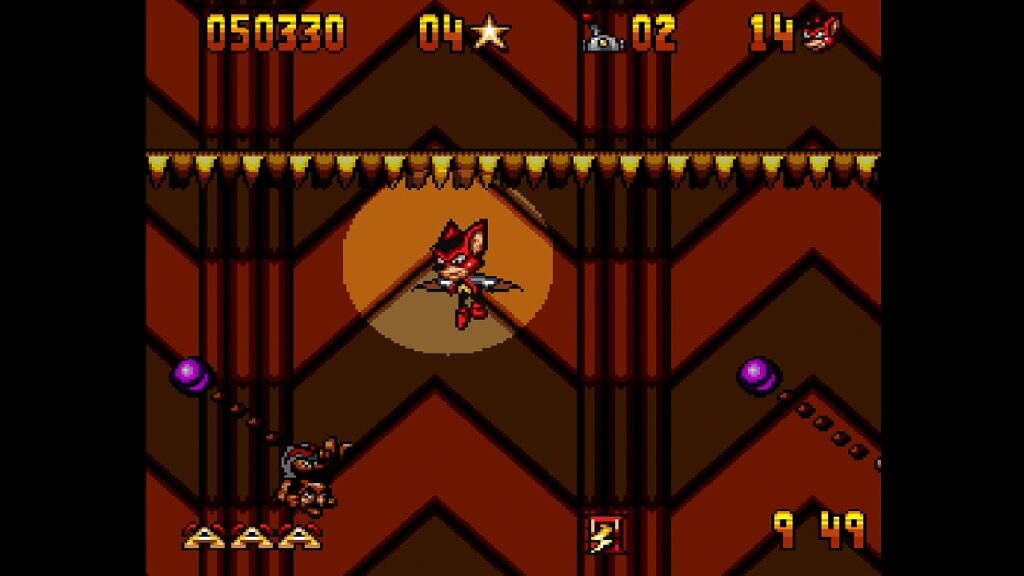
The game features four worlds, each broken into several acts, with a boss at the end of each world, all leading to a final battle against the evil Edgar Ektor, who is the mastermind behind the attack on Aero’s circus. The controls are a bit stiff and not precise compared to some of the better games in the genre from this era, and you may find yourself using the rewind when you get killed by the wrong input, sending you careening into spikes. The graphics are also a bit bland, with smaller-than-average character sprites, and the levels themselves are a bit boring and consist of mainly basic platforms and obstacles repeated in different configurations. The later games in the series became much more visually and control-wise interesting, especially the spin-off Zero the Kamikaze Squirrel, which will be released in October from Ratalaika. $5.99 seems steep for a relatively basic 16-bit platformer, and the game doesn’t even have any exciting bonus features like concept art or box art from different regions. I would be on board for a collection with all four games and some bonus features for about $19.99 or so. Unless you’re a huge fan of Aero the Acrobat from back in the day, there are other retro re-releases or modern games with a retro feel to check out before this one.
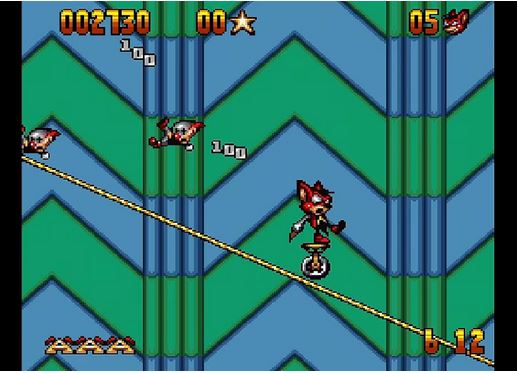
(Chris): Aero the Acrobat is back, and this time, it’s been given new life thanks to Ratalaika Games and Shinyuden’s recent port. For fans of the original 16-bit classic, it’s a welcome nostalgia trip. The gameplay remains as fun as ever, packed with the simple platforming mechanics that made it stand out in the ’90s. There’s something satisfying about swooping through hoops and taking down enemies with Aero’s acrobatic moves. There’s the fun of retro games that are kind of straightforward that modern games sometimes miss.
That said, the graphics in this port could have used more attention. While the game retains its retro charm, a bit more polish could’ve made Aero’s world feel vibrant again. Instead, some of the visuals feel flat compared to other modern retro releases. It’s still fun, but it left me wishing for a touch more visual refinement. If you’re a fan of the original or love retro platformers, Aero the Acrobat will hit the right notes. Just don’t expect it to look as sharp as it could have in this port.
Kiborg: Arena (Zach): A prequel to the upcoming full release of Kiborg from Sobaka Studios, Kiborg: Arena sees you engaging in endless waves of battles against various enemies. You play as Morgan Lee, who will be the main protagonist of the whole game. In Kiborg: Arena, you are in a gladiatorial combat competition, working your way through increasingly difficult fights and seeing how far you can progress. You have a mix of brutal hand-to-hand techniques and firearms you can pick up to take out enemies from a distance. After each round, you get some upgrades, whether a new weapon to bring into the next fight or an upgrade to your body. You can gain cybernetic arms and other body parts that will increase specific stats or give you a status effect on your attacks, like electrical charges. It will also visually change how your character looks, which lets you customize and create an awesome-looking cybernetic warrior as you progress through the battles.
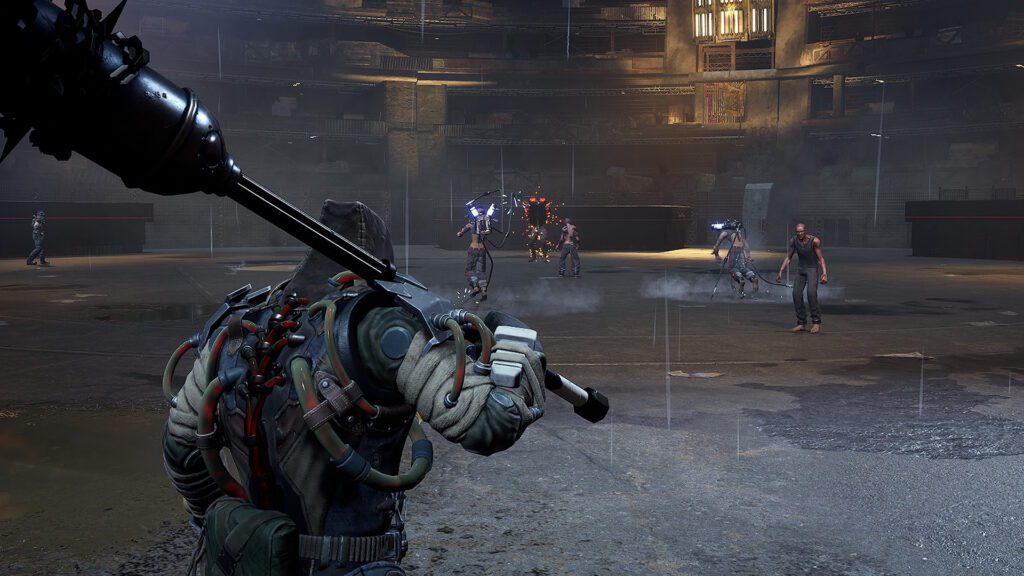
The game plays from a third-person perspective, and it’s incredibly fast-paced and brutal combat that feels great. You feel and see the impact of your strikes, and there are some brutal, awesome-looking finishing moves that you can pull off on downed enemies. There’s a bit of wonkiness with the camera at times, especially when you are using the firearms and trying to aim and move, but for the most part, this is a solid and fun taste of what the full game will be like. If you like brutal, third-person action with some cool upgrades and aesthetics, check out Kiborg: Arena, and since it’s free, it’s a no-brainer to try it.
Dark and Deep (Chris): Podcasting has been an amazing way for people to convey stories and share opinions. But what if a podcast about a conspiracy suddenly becomes someone else’s new reality? Developed by Walter Woods, Dark and Deep is an indie horror adventure title that follows Samuel Judge, an IT worker who lives a seemingly normal life and is a fan of a struggling podcast series. His world is turned upside down and he plunges into something sinister when he finds himself trapped in a nightmarish landscape. Surrounded by shadowy entities, Samuel is given mystical frames that help him navigate the darkness. But what haunting truths will be shown when the light reveals the secrets in the dark?
Dark and Deep is a surrealist horror experience, the game leans on the cryptic narrative and puzzle-solving mechanics, but the majority of the time focuses on exploration. It’s not just a simple walking sim, creatures lure around and wait for Samuel to drop his guard down. But Samuel isn’t completely alone on his journey. There is a mysterious woman that guides the player, but in eerie ways. There are no direct “Hey, look at this helpful item” prompts, more so in the “Suddenly appear in a location and vanish as you make eye contact”. But she’s not all ambiguous with her support, she leads Samual to magical frames that can vend off enemies and help solve puzzles. One magical frame can spot the shadowy figures that hide in plain sight. The player can see the motion of something moving and hear their breathing, but only the magical frame can reveal this presence. Looking at the creature long enough exposes them to light and destroys them. Another frame can reveal hidden objects in the background that give Samual clues to his escape. Many of these clues are drawings, showing something about the environment and unsettling things about what will happen next.
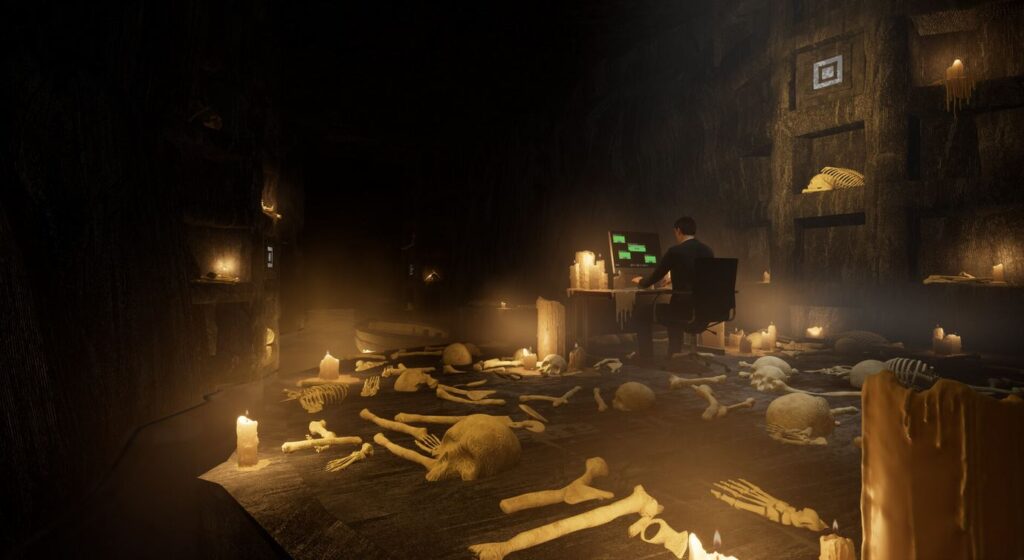
Much of this game is an impressive feat for a single developer to create as much content in the game as it does, but a few unpolished spots keep the game in the indie realm. The narrative is an art house cosmic horror experience, favoring a disjointed story rather than intense frights. Enemies quickly lose their frights after the second encounter, but a few surprising scares exist. There are long sequences with too few checkpoints at the right place, so there are some dips in excitement when restarting a platform jump, puzzle selections, or plot exposition. I did enjoy how the narrative incorporates listening to a short podcast series, which acts like an audio diary entry that gets more familiar with Samual’s situation. There are fun details about the podcast that are rewarding for players who pay close attention to the conspiracy rambles. It’s also funny to hear the advertisement reads that mimic listening to an actual podcast. As a casual take on cosmic horror, Dark and Deep works best for people interested in interpretational storytelling and looking for a break from conventional horror titles. Dark and Deep was released on August 13th and is available on Steam.
On Point (Zach): Paying homage to the classic Point Blank series from Namco, On Point from Actuator Digital takes the concept of fast-paced, shooting mini-games into VR. Available in Meta and Steam VR, you strap on the headset and are transported into a virtual arcade, where there are dozens of mini-games available at three different difficulty levels. After you choose your difficulty, you’ll get a set of four mini-games to finish, and if you complete those without losing all your lives, you’ll take on four more. Each mini-game has a specific objective, time limit, and bullet count; you need to meet or exceed the objective to avoid losing a life. Some of the mini-games include trying to shoot the wool off a certain amount of sheep, taking out patterns of targets rapidly and accurately, or trying to take down a UFO with one bullet.
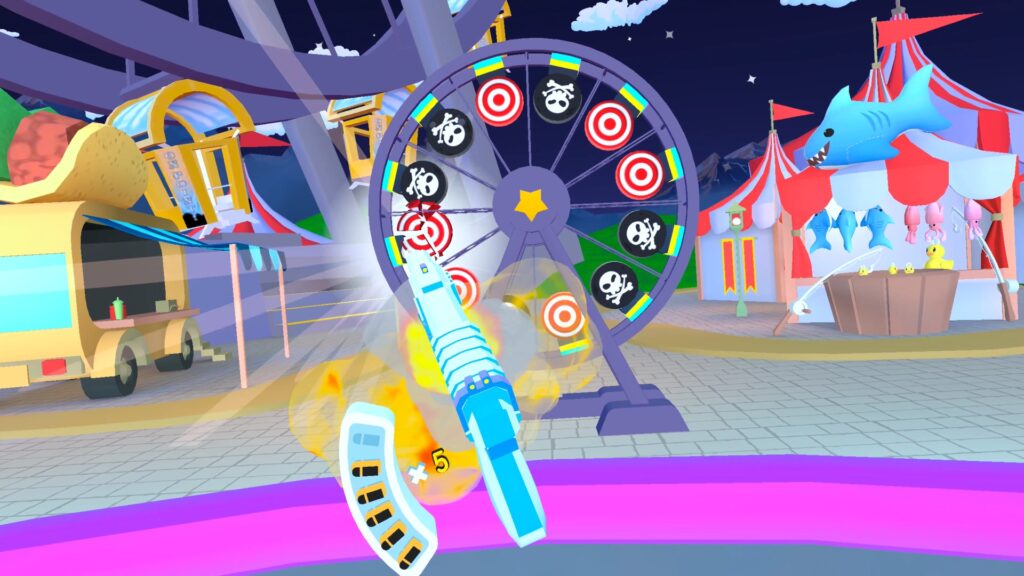
The designers know exactly what they are doing in replicating their inspiration, even making your virtual gun a replica of the iconic Namco Guncon controller, and the game has the fast-paced fun of the Point Blank series down. The shooting feels great, and you can be fast and accurate when needed. There are local, global, and friend leaderboards where you can compete to get a high score. There are 90 mini-games, and the game is still in Early Access so that new games could be added, and the current games and features could be tweaked. If you’re looking for pure arcade shooting action in VR, On Point is worth a look, and it nails the gameplay style of the Point Blank series that inspired it.
Volgarr the Viking II (Zach): Over ten years since the original Volgarr the Viking debuted, Digital Eclipse has brought the Viking warrior back in Volgarr the Viking II. Called upon to complete a brutal new quest, Volgarr sets out into the Norse-inspired worlds of the game, taking on all manner of deadly creatures and dangerous obstacles. Like the first game, this is a side-scrolling platformer that takes inspiration from classics like Rastan and Ghosts N Goblins, and it isn’t easy. Volgarr the Viking II is about mastering the controls, understanding what each move can do, and then strictly doing them. Unlike many games recently, Volgarr II isn’t a rouge-like/lite, and each stage is the same each time you tackle it, which helps you learn and progress as you know exactly what is coming up if you’ve already seen it before. There are a few nods to accessibility, including a checkpoint system and a practice mode, which you can turn on and off to customize the difficulty to your liking but the developers have said the “true” way to play is with all these features turned off.
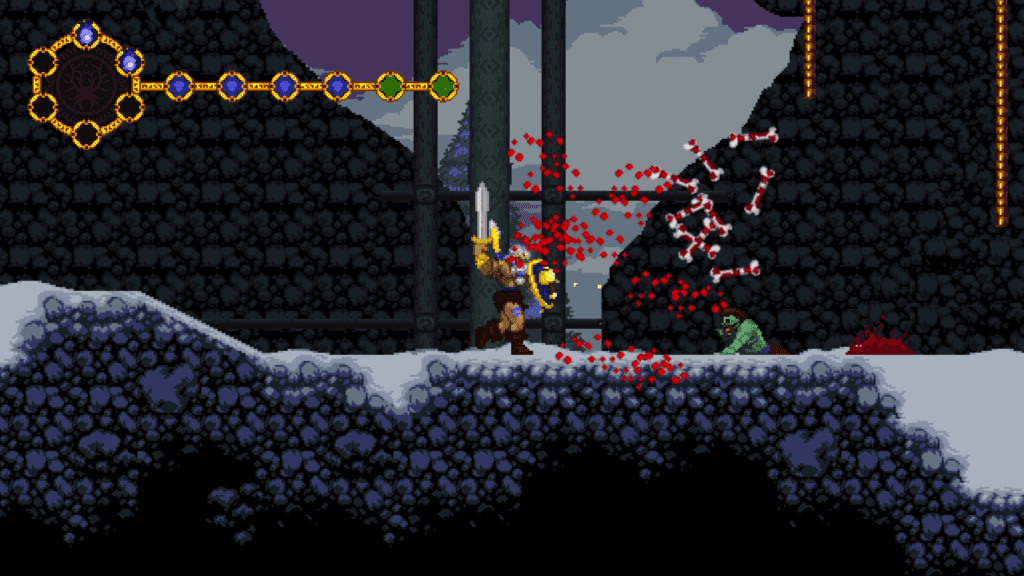
Base-level Volgarr can only take one hit before being killed. Still, you can collect different pieces of armor that will allow Volgarr another hit and imbue new abilities or powers, like a flame sword. Volgarr has a sword and a spear, with the spear serving as both a weapon and a means of traversal, as you can embed it into the environment and use it to climb up to higher areas. The game has a fantastic look that captures the arcade-style inspiration, and there’s tons of variety in the environments and enemies you’ll encounter. The game has a heavy metal vibe, complementing the excellent soundtrack. Volgarr the Viking II isn’t for the faint of heart, but if you are a fan of brutally difficult action platformers, or you played and enjoyed the first game, Volgarr the Viking II is out on PS4/5, Switch, PC, and Xbox Series S/X.



